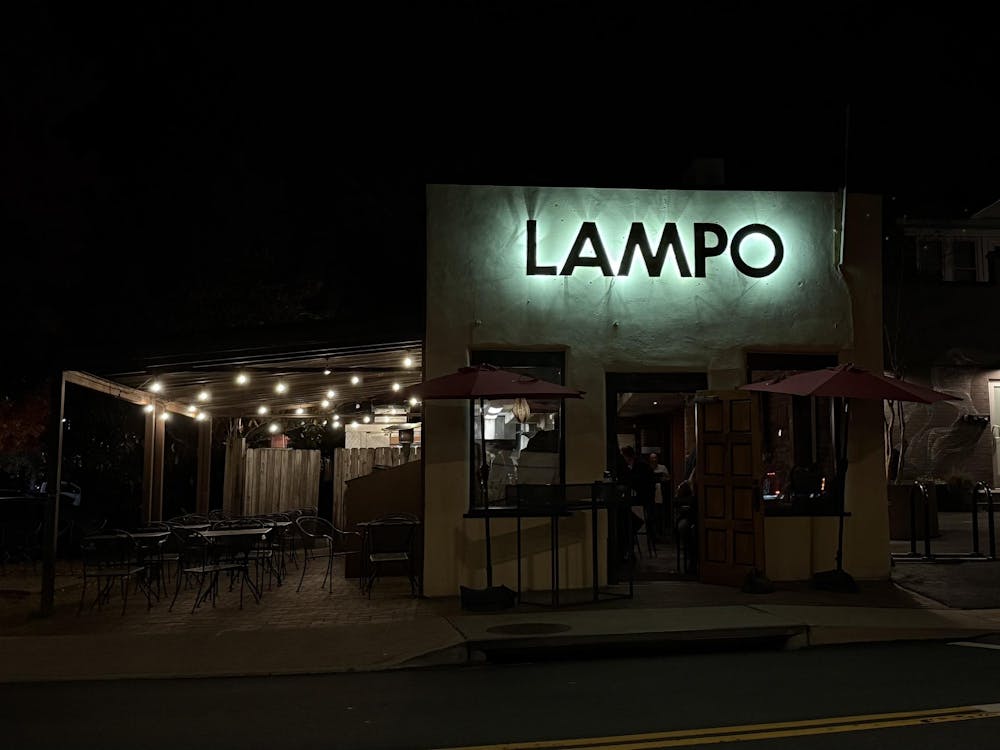MIAMI - Midterms were over for most students the Friday before Spring Break, but for about 45 University students, a bigger test - one of endurance, of relationships and of physical work - had only just begun.
As University students piled into vans, sports utility vehicles and small sedans on the first Saturday of Spring Break, only a handful knew what to expect after the 17-hour drive to Miami, one of several cities which Habitat for Humanity serves. The volunteers did know, however, that instead of having a traditional week-long college spring break party, they would lend their hands to a non-profit organization that seeks to eradicate inadequate housing and homelessness by constructing quality low-cost homes.
Most of the south-bound cars contained a medley of students who did not know each other, but after they passed a vehicle filled with naked passengers and signs proclaiming "nudity is freedom," the volunteers knew they had a long way to go before they would reach that kind of intimacy. Still, dilemmas - such as lost car keys, speeding tickets, car break-downs and trips to Wal-Mart for bungee cords and roof bags to accommodate the luggage of the people whose car broke down - brought the group together. Six tanks of gas later, the entire contingent of University volunteers arrived.
Homestead, Fla., was not exactly the South Beach location that many had ideally pictured. However, the cabins, which were originally built as hurricane relief homes, were fairly clean and equipped with bathrooms and a stove. Volunteers learned to ignore the barbed wire and frequent police sirens and ultimately found the lodging to be quite comfortable.
The Habitat work site, Jordan Commons, was a 15-minute drive from the cabins and was the location where volunteers spent their week constructing homes for the underprivileged. The small neighborhood with both construction and completed homes rested in a large, quiet plot of land, a far cry from the fencing and noise of the volunteer cabins. Several streets with completed homes bordered a large field of houses currently under construction.
|
The average Habitat house is 1,050 square feet. There are 87 completed houses in Jordan Commons that are extremely similar in design, but have varied roofs and different pastel colors chosen by the residents and create a collage of suburban color. The families have converted the completed houses in Jordan Commons into homes with manicured gardens and basketball hoops.
Nearly half of Miami households must spend 75 percent of their income on housing, and in a city where over one-third of the residents live below the poverty line, many families may never be able to afford decent housing. Most Habitat homeowners lived in devastatingly dilapidated or inadequate houses before the construction of their new homes.
Glendo Hamilton, a Floridian who qualified for a Habitat home, told workers that living in a new house provided her with more than just physical comfort.
"It's like, 'Wow, I don't have to be ashamed of where I live,'" Hamilton said. "I'm going to live the rest of my life out in a wonderful home. From this point on, it's all up."
The residents of the Habitat neighborhood are not only required to pay minimal monthly amounts of about $400 to cover any building costs and future Habitat construction, but they also must put a certain amount of "sweat equity," or labor hours, into their houses.
The future Habitat homeowners were not the only ones who benefitted from the trip. As Megan Ball, a volunteer and first-year College student, explained, the trip "was a great way to meet some genuinely good people."
Many student volunteers mentioned that working side by side with the future residents was one of the most rewarding parts of the trip.
A local grocery store sponsored a buffet dinner and talent show one evening at the site for the residents and the volunteers. One young boy had several 10-year-old admirers giggling and all the college volunteers charmed with his outrageous dance moves.
A family atmosphere pervades the entire neighborhood, as children race around the streets on bicycles and play basketball in the completed sections of Jordan Commons.
At the Miami site, 13 homes are in the process of being constructed under the supervision of professional construction worker volunteers and trained workers of AmeriCorps, the domestic Peace Corps.
Habitat volunteers arrived at the work site every morning at 8 a.m. and listened to a devotional prayer and sermon delivered by a leader of another college group. Most University students on the trip did not realize Habitat is a religiously based organization, and many of the morning devotionals sparked philosophical debate after the workday.
Until 11:30 a.m. every day, the University students worked on two assigned houses, both of which had already been partially started by a college group from the week before. Under the blanket of a thick Miami heat, volunteers nailed literally thousands of nails into the exterior plywood walls, measured, cut and constructed the interior walls, swung from the rafters and constructed the ceiling. Even inexperienced students could perform construction work with the instruction of the permanent Habitat volunteers.
The small, one-story houses were only slightly larger than a mobile home, and one AmeriCorps worker explained that although he knew how to build a Habitat home from the ground up, he would not be able to build a larger house with a more complex design.
A half-hour break would come around noon for lunch, mostly consisting of peanut butter and jelly sandwiches, apples and granola bars packed earlier in the day. The main variation occurred Wednesday when students raced to McDonalds for 29-cent hamburgers. Sitting in the midday Miami heat, volunteers shared food and played Frisbee as they waited for the arrival of the ice cream truck that was a perfect interlude to the day of work.
From noon until 4 p.m., volunteers continued to work on the houses, adding weatherproof tarpaper to the walls and beams and plywood for the ceiling. The days on which the architect and building inspector visited seemed especially frantic, as AmeriCorps workers made preliminary inspections to certify that nails were 6 to 8 inches apart and that rafters and roofs and walls fit together perfectly.
It was at nightfall, though, when the disparity between the rich and poor in Miami became glaringly obvious. Many University students trekked to South Beach to watch the sun go down over the deep blue water or to walk along the pulsing strip of restaurants and clubs. Elegant restaurants and expensive bars lured well-dressed sophisticates as lights and music electrified the main avenues of chic Miami and stood in stark contrast to the Jordan Commons.
After several days of physical construction work, the general consensus among the University students was that the transformation of the house from a foundation and plywood shell to a building with interior walls, a roof and waterproof tarp was well worth the effort.
"It's definitely going to be one of my most memorable college experiences," first-year College student Katia Maguire said.
On the volunteers' one day off, the University students split up to see different parts of Florida. Some groups visited the Everglades, others drove to Fort Lauderdale, and some traveled to Key West to soak up sun and watch street entertainers perform at the main wharf at sunset. From the acrobatic skills of Dr. Juice to the Harry Houdini wannabe hung upside down with his arms chained together, Key West boasted some unusual characters.
Coming back to the work site after the far-removed world of tourism and glitzy nightlife was a sobering experience for the volunteers, and it became difficult to reconcile the parallels of excess and poverty within the same city.
However, it was a small consolation Saturday morning, when in the midst of the long drive home, a billboard encouraged drivers to "stay home tonight" and rent a movie. Habitat volunteers could say that for at least one family, it would be significantly easier to comply with that simple request.






